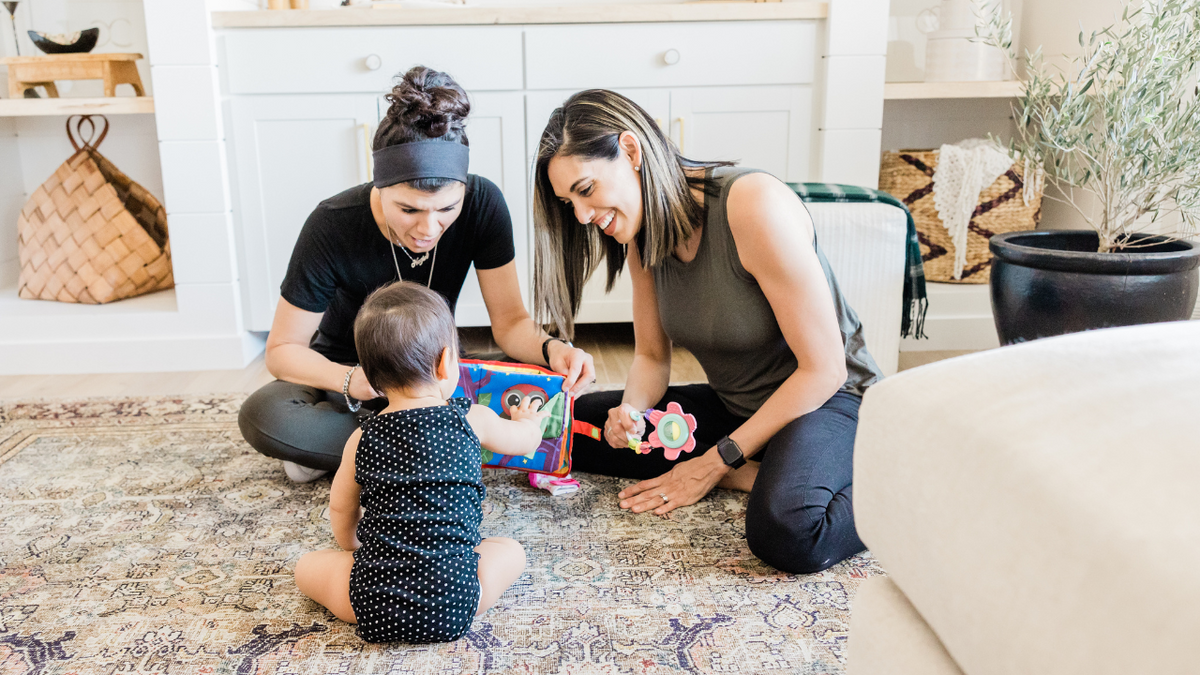
The Power of Play: How Playtime Fuels Growth and Learning at Every Age
|
|
Time to read 3 min
Childhood is a time of discovery, wonder, and, most importantly, play. It’s a fundamental and powerful engine for a child’s development. A way for them to explore the world, build skills, and make sense of new experiences. And that’s just the start of it…
Enhancing Growth and Learning with Effective Playtime Strategies

There’s nothing like the sparkle in a kid’s eyes when they’re engrossed in playtime. It’s their way of understanding the world, expressing themselves, and building connections. Play is more than a pastime, it’s a critical part of early development.
From finger painting to chasing bubbles, from puzzle-solving to pretend pirate adventures, every playful moment helps nurture a child’s physical, emotional, and cognitive growth. The secret lies not in the complexity of the activity, but in the engagement and exploration it encourages. Play is a powerful engine for learning, offering children the opportunity to develop essential life skills in joyful, natural ways¹.
In this article, we’ll dive into evidence-backed insights to help you better understand the different ways play supports development and how you can make the most of this magical stage in your child’s life.
The Developmental Power of Play


Play is not just fun—it’s fundamental to a child’s well-being. Through play, children learn to communicate, collaborate, problem-solve, and self-regulate. It enhances their brain development, supports motor skills, and fosters empathy and creativity¹.
As children play, they build confidence and resilience. For example, stacking blocks or fitting puzzle pieces teaches persistence and spatial awareness. Pretend play enhances emotional expression and social skills by helping children “rehearse” real-life situations in low-risk settings². These simple acts may seem small, but they help children process emotions and gain control over their environment².
How Play Evolves by Age
Children move through distinct play stages as they grow, each one building new skills and social understanding. According to occupational development guidelines, the progression is as follows⁵:
Infants & Toddlers (up to ~2 years): Play is primarily exploratory—infants learn through sensory experiences and repetitive actions, laying the groundwork for motor and cognitive growth.
Toddlers (2–3 years): Play shifts into more functional interactions—children engage in simple pretend play, imitate everyday routines, and experiment with cause and effect through basic play activities.
Preschoolers (3–5 years): Symbolic and fantasy play becomes prominent—children use objects creatively as stand-ins (like pretending a block is a phone), experiment with narrative roles, and organize complex imaginary games. This stage supports early language development and social understanding.
The Many Forms of Play (and Why They All Matter)


Play comes in many forms—each nurturing different aspects of development: 5
Sensory Play — Engages touch, sound, sight, and movement to support cognitive and motor development.
Imaginative Play — Helps children explore ideas, emotions, and social roles through storytelling and make-believe.
Physical Play — Supports gross motor strength, coordination, and confidence through activities like climbing, running, and dancing.
Constructive Play — Involves building and creating (e.g., with blocks), fostering planning, problem-solving, and creativity.
Collaborative Play — Occurs when children interact, share ideas, and work together—a crucial foundation for social development and communication.
Each of these types of play serves a distinct role in a child's development—supporting physical, social, emotional, and cognitive growth.
The Parent’s Role in Play


Parents play a crucial role—not by directing play, but by joining in and encouraging it. Engaged caregivers who respond to their child’s cues, offer safe environments, and let children take the lead help strengthen the developmental impact of play¹. Rather than focusing on structured instruction, it’s far more effective to create time and space for open-ended, joyful exploration⁴.
According to the Harvard Graduate School of Education, balancing playful learning with adult-guided moments (like asking open-ended questions or expanding on a child’s idea) helps deepen the educational value of play³. That means the next time your child hands you a toy phone, answer it with enthusiasm—you’re not just playing, you’re teaching them how conversation works!
Final Thoughts: Play Is Serious Business


Every time your child engages in play—whether it's a game of chase or a quiet puzzle—they’re learning, growing, and building their future. Play fosters curiosity, creativity, collaboration, and resilience. When parents recognize play as a key developmental tool and actively encourage it, children reap the benefits for years to come¹.
So let’s champion more recess, more nature walks, more imaginary kingdoms, and more “just because” dance parties. In doing so, we’re giving our children not only joyful memories but the tools they need to thrive.
References
Michigan Medicine. (n.d.). 6 easy ways to boost brainpower during playtime. University of Michigan Health. https://www.michiganmedicine.org/health-lab/6-easy-ways-boost-brainpower-during-playtime
nidirect. (n.d.). How play helps children's development. https://www.nidirect.gov.uk/articles/how-play-helps-childrens-development#:~:text=balance-,Developing%20social%20skills%20through%20play,out%20emotional%20aspects%20of%20life
Harvard Graduate School of Education. (2023, May). Embracing learning through play. https://www.gse.harvard.edu/ideas/usable-knowledge/23/05/embracing-learning-through-play
ThinkPsych. (n.d.). Playtime power: How play enhances childhood development. https://thinkpsych.com/blogs/posts/playtime-power-how-play-enhances-childhood-development#:~:text=Encourage%20Outdoor%20Play:%20Take%20advantage,Wrapping%20Up
The OT Toolbox. (n.d.). Play by age and stage. https://www.theottoolbox.com/play-by-age/
AAA State of Play. (n.d.). 9 Types of Play and Why They Matter. https://www.aaastateofplay.com/9-types-of-play-and-why-they-matter/?srsltid=AfmBOopYFwaFfpwOsvLLUqVNKaW15DVL4k3Y97tfqTZWkNOqxrBw_W4w



